BROWSER WINDOW IN DESIGNING SYSTEMS AND VISUAL WORLDS
Michał Szota
Source: artist’s private gallery
If he had to write a manifesto, he would definitely have included the slogan of data release in it. Creative Commons ideas played an important role in the development of his artistic practice. The most important for him is to be a ‘filter’, to let the world pass through him and to collect various experiences in a private ‘database’. He uses this collection in his following artistic projects. He experiments with Internet content and tools even in VJ practice. He created a game on the internet that is at the same time a multiplayer game show and psycho-test. He is also involved in designing an instrument for virtual reality – an abstract world that we can play on. We talk with Michal Szota about the changing language of new media, designing flexible and useful systems for the Internet, and Internet activities in physical space.
In the English version we present selected and most interesting quotes from the interview.
EXPERIMENTAL VJ USING A WEB BROWSER
Game show / experience, M. Szota, source: artist’s private gallery
I knew for a long time that there was something cool about transferring my work experience to other spaces. I designed websites and creating one that would not be used to present the company’s offer was quite an obvious idea for me. I had a set of few but professional competencies to take something on the screen and move it with this technique. It is fun having your own tools to do this. You mentioned Manovich. I’m not a fan of him, but he certainly had a very accurate observation of how digital tools define culture. Using the example of After Effects software, he showed that at some point all animations look very similar, because they are created with the same tool. I wanted to avoid the traces left behind by popular VJ programs.
At the very beginning, I had a demo version of ArKaos program. It was a little odd. Later, VJ-ing entirely changed its course. ArKaos was ostentatiously not analogue, and it made parameterization of everything difficult and inconvenient. However, it was possible to assign video samples to particular pushbuttons and you could play the clips like the piano. So, in fact, it was perfect for live editing. It created ‘flowing’ music videos. I have always been extremely interested in these ones. I will definitely come back to this in my other activities.
Game show / experience, M. Szota, source: artist’s private gallery
There are many computers around us, of which IT security status is poor and very easy to break into. I always think about my motorized vacuum cleaner, what role it will play in this big cyber heist that will happen someday. Of course, I am only joking!
Once, I collected various images from our homeland using simple scripts. An interesting catalogue of postcards of Eastern European early cyberpunk, ‘baumapunk’. I also used to spend a lot of time on iStockphoto, where I used to sell stock photos during my studies. There is a rich database of videos, put together in categories such as ‘business hands’, ‘woman in the field’, ‘elevator goes fast’, ‘stop motion sunset over corporate Europe’.
Yes. It would be a really interesting multi-level plagiarism to make use of it. Probably it could be beautifully turned into one more layer of irony, tell some wonderful story about it – and it would be done. A vaporwave that follows this practice is a constant inspiration and a favourite of mine. I just made a clipper that glued music videos together- an endless stream of optimistic stock images. By typing in keywords, you could control this waterfall of shots.
MULTIPLAYER-PSYCHOTEST GAME AND VR WORLD/INSTRUMENT
The longer I work on my game-experience, the more often I call it a game show. This is a better epitome to give you a general idea of what I made. And it seems to me that it is as much a game show as a multiplayer-psychotest. The project has its origins in Covid and emerges from the apocalyptic energy that was flowing through everyone at the time. I got an artistic scholarship from the Capital City of Warsaw to implement this, so now I can do more than just experiment with ‘passing through’ quickly and being a filter. This is an exercise in building totality. You enter the world of three-dimensional scenery and meet other people in real time. You are going through a heavily moderated emotional dialogue with a series of closed questions and answers that are essentially a psycho-test. I want the visual layer to be an integral part of the meeting, which takes place in an extraordinary world that transforms over time. At the same time, it is a literary experience. Anyway, I have been writing a lot lately on visuals on the screen and experimenting with the form between typography and content. This is my main area of concern now.
My plan was not to make it a mass game, but an experience structured like a visit to a theatre. The sessions are held in real time, the event begins and ends at a certain point in time, and that is when you need to pay attention to it. Enter a secret address and meet anonymous people. (Attention: from the new year, the game is available 24/7 under one address).
VR project Canti Spazializzati #9 that accompanies the exhibition ‘The Field of Regeneration’ in which I am involved is essentially based on interaction. Thanks to the invitation of the curator, Daniel Brożek, I co-create a world that is also a musical instrument, and which is situated in VR. I work with the composer Paulina Beniovska, who deals with sound. In VR, we most often see an experience of an environment or an object from the first person perspective, and I think you can free yourself from it to create an instrument. I have seen various audio experiences in virtual reality, which consisted of just playing on some object. I think I can create something that is not a world, but an abstract structure that does not have to be permanent like this, but on the other hand, it would be possible to maintain perceptual commitment. I do not want it to cause complete paralysis and epilepsy, so I have to keep some kind of permanence. I am experimenting with this.
Canti Spazializzati #9, M. Szota i P. Beniovska, photo: K. Ździebło, source: Facebook @CantiIlluminati
LISTEN TO SENSOR PODCAST
Broaden your perception. Hear about how technologies are changing art, culture, society, politics and marketing. The first series of interviews presents artists of the new media. You will find on Spotify part of the interview unpublished on the website.

See also...
Krzysztof Goliński
The dialogue between algorithms and tangible matter

Antonina Nowacka
Bogusia Nowacka

Jakub Wróblewski


Ⓒ Copyright 2022 Sensor
Website proudly created by Karolina Jaworska
Used font: Roboto
Project by Weronika M. Lewandowska under an art scholarship of the Capital City of Warsaw
